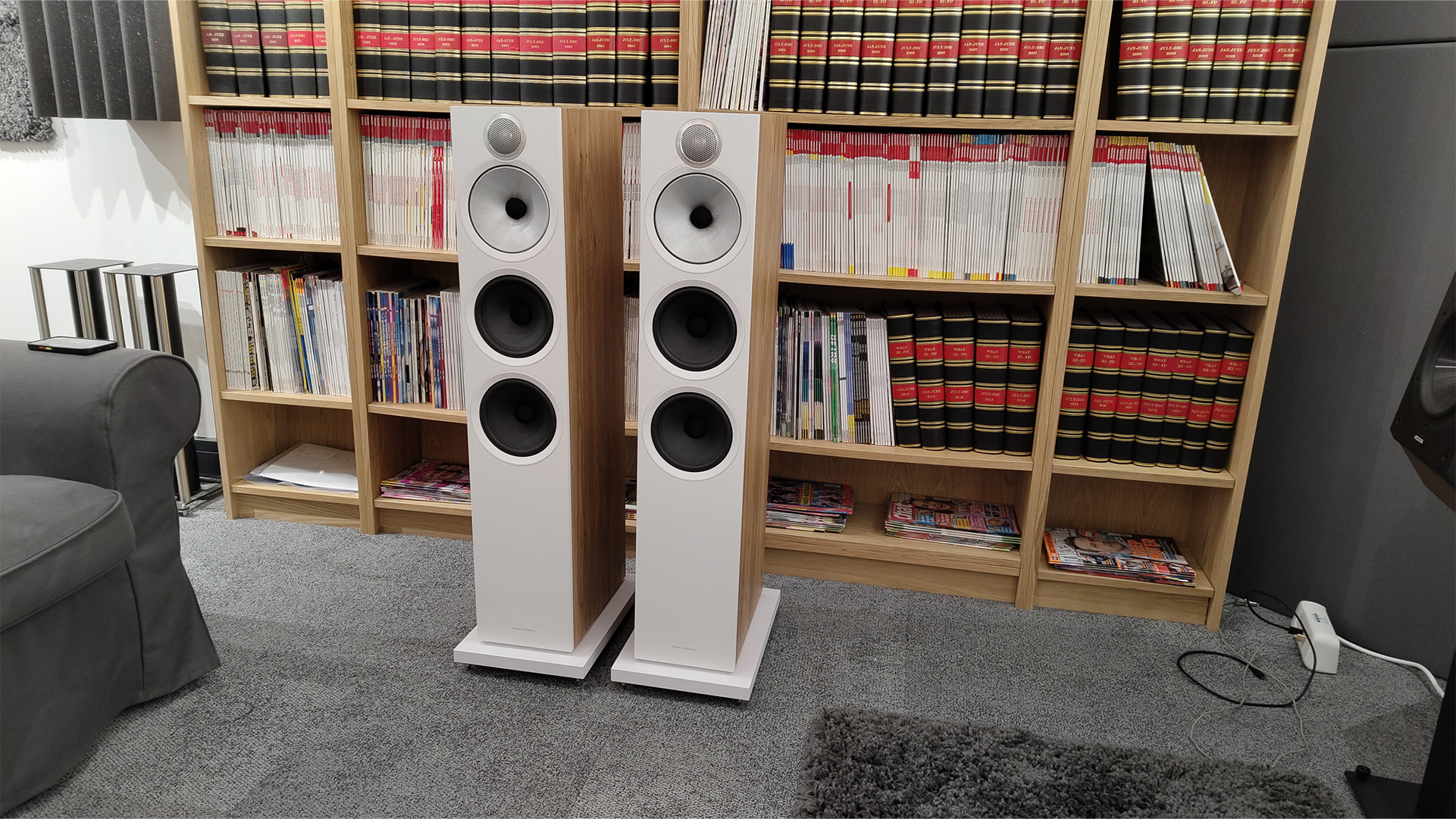What Hi-Fi? Verdict
The 603 S3 will appeal to anyone looking for a pair of floorstanders with a full, clear sound that can fill most rooms with ease, even if they’re beatable for timing and dynamics
Pros
- +
Weighty, full sound with plenty of punch
- +
Clear and detailed presentation
- +
Nicely made and finished
Cons
- -
Occasionally lacking in levity and fun
- -
Can be beaten for dynamic contrast
- -
Need some care with partnering
Why you can trust What Hi-Fi?
There’s a young lad somewhere in Argentina who has quite the sporting family. His father, Sergio Agüero, is generally considered to be one of the finest strikers in Premier League history, while his grandfather (and Sergio’s father-in-law) was also a keen footballer by the name of Diego Maradona. If you’re wondering how one child could surround himself with any more footballing prowess, he also has a godfather. That man’s name, almost inevitably, is Lionel Messi.
Whether the young man ever chooses to go into football or not, he is surrounded by excellence, so much so that the weight of expectation must be galactic. That feels akin to the situation we have with the new Bowers & Wilkins 603 S3, a pair of floorstanders that are central to the brand’s new 600 Series and that have the weight of some serious pedigree, not to mention competition, firmly upon their metaphorical shoulders.
The much-coveted 600 range from Bowers & Wilkins has produced multiple What Hi-Fi? Award-winners in the past few years, including the 607 S2 Anniversary Edition and 606 S2 Anniversary Edition standmounts, while the new series continues that trend with table-toppers in the shape of the 606 S3 and the 607 S3 standmounters. Our expectations, it’s fair to say, are rather high, and we’re excited to see not only if the 603 S3 can live up to an almost royal legacy, but whether they can outperform some very capable rivals at this level.
Build & design
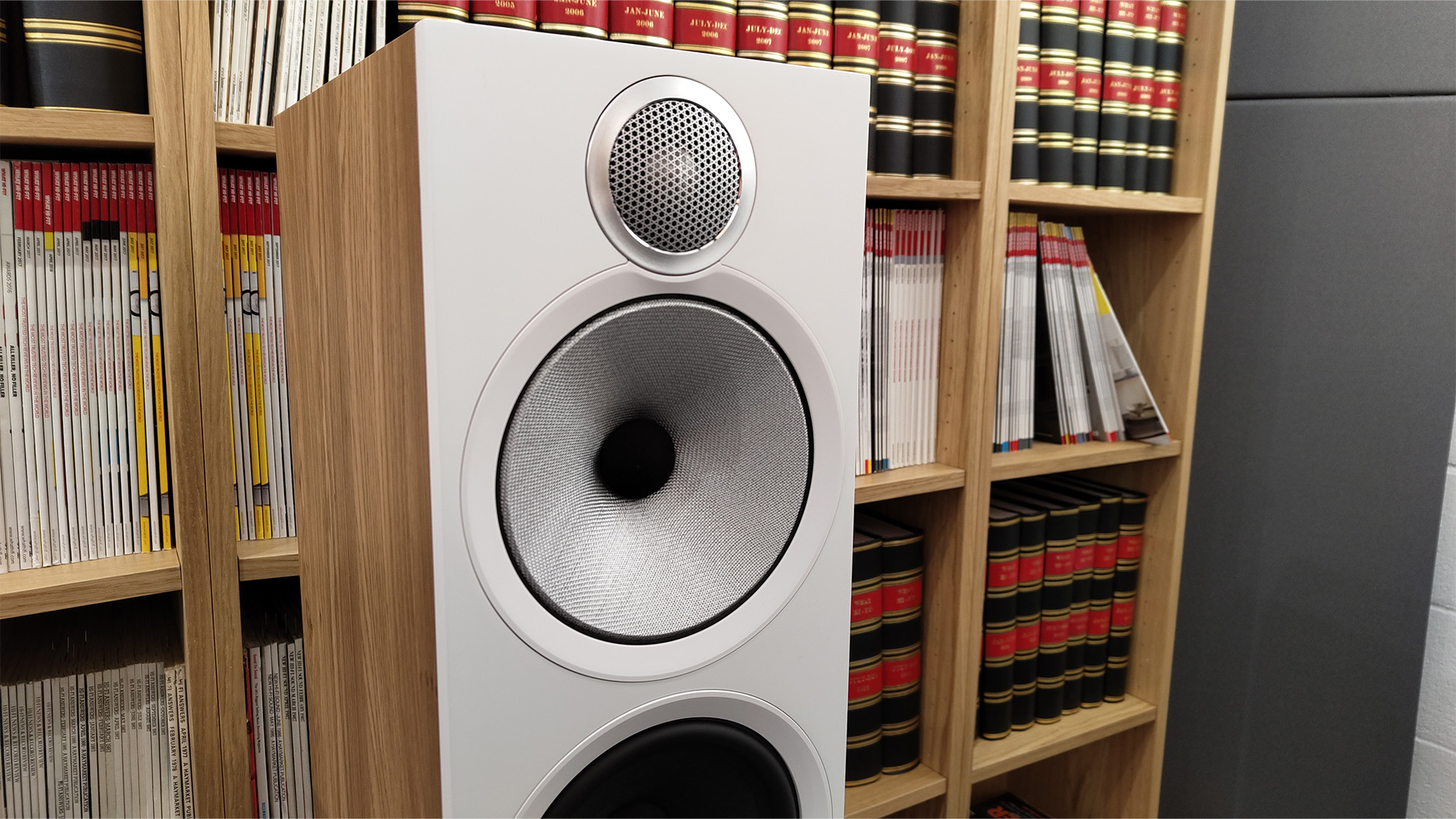
The general design of the 603 S3 floorstanders is relatively consistent with the rest of the B&W 600 S3 range. Like their five-star stand-mounted S3 siblings, these are nicely made towers that look handsome enough, even if our white and oak test pair do have just a whiff of “Don Johnson’s jacket from Miami Vice” about them. Still, other colourways, including black or red cherry are available (the latter is for Asia Pacific customers), or you can double down and go for an all-white finish if you’re truly stuck in 1984.
The 603 S3 floorstanders are the largest and most costly speakers in the entry-level 600 series, designed mainly for “larger rooms and home theatres”, packing in a 25mm titanium dome tweeter, B&W’s custom Continuum 15cm midrange cone and a pair of 16.5cm paper bass drivers. They’re relatively sizeable towers, too, standing at 102cm high when mounted on the plinths and dwarfing its rival, the shorter, slimmer PMC Prodigy 5 by over 10cm. Those plinths, incidentally, come as standard and screw into the bottom of the towers, with four spikes attached to the base.
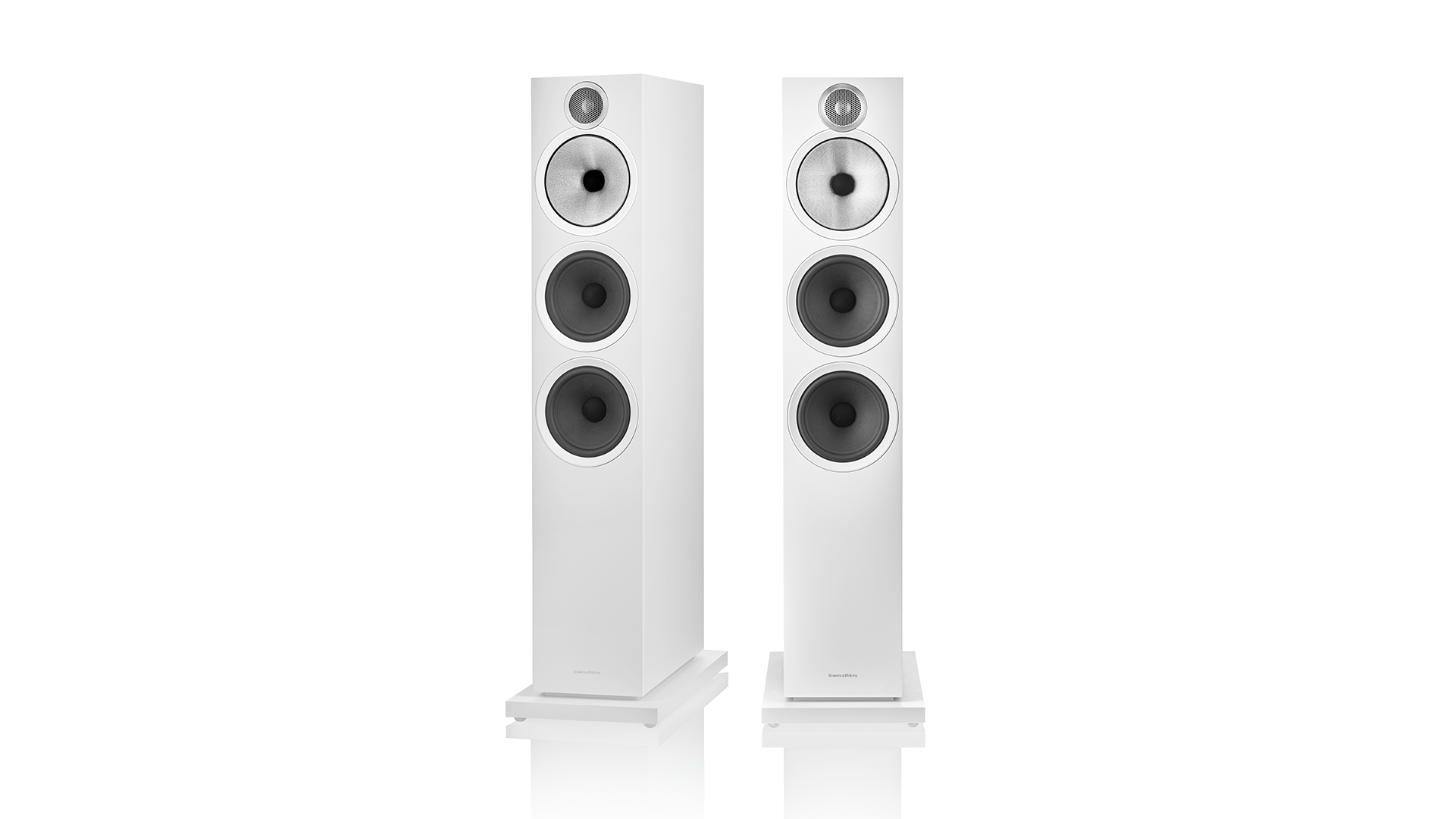
Type Floorstanders
Drive Units 25mm tweeter, 15cm midrange, 2 x 16.5cm bass
Ported? Yes (rear)
Bi-wire? Yes
Impedance 8 ohms
Sensitivity 90dB
Dimensions (hwd) 90.5 x 16.5 x 23.7cm
Net weight 27.5kg
Finishes x 4 (black, white, oak, red cherry)
Staying at the underside of the towers, look around the back and you’ll find twin terminals – giving the option of bi-wiring. They’re also rear-ported, and Bowers & Wilkins will supply you with a pair of foam plugs that can be used to lessen the impact of the bass response if absolutely necessary. It’s a fine option to have, but we’d recommend only using the plugs if you’re forced to place your speakers right up against the wall and want to mitigate some of the excessive low-end muddiness that will potentially result.
Like their standmount counterparts, the upgrades to most components and elements are rather extensive. The all-new titanium dome tweeter, kitted out with an acoustically transparent grille mesh, promises “resolution and insight”, while that Continuum cone has been designed to avoid “abrupt transitions in behaviour that can impair performance”.
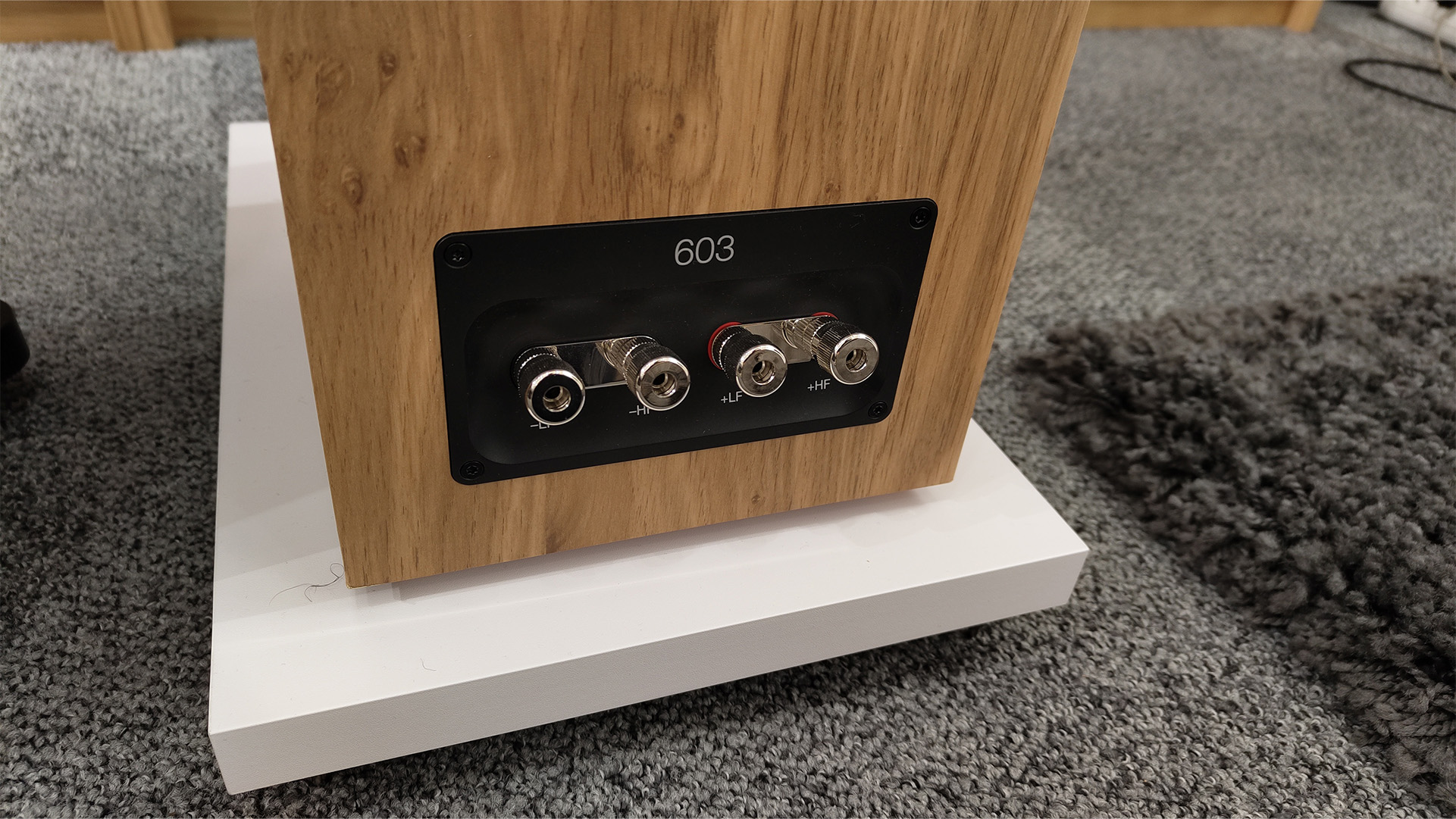
Much of the internal DNA and clever tech from the more costly 700 series has trickled down to the new 600 range, including a more powerful motor assembly for the midrange driver which, rather than using a conventional rubber surround, uses a special type of foam which is claimed to damp down resonances more effectively. The new towers also employ higher-quality bypass capacitors within the crossover and a longer tube-loading system for lowering the levels of unwanted radiation from the rear of the tweeter.
We use our reference system of the Naim ND555/555 PS DR music streamer alongside a Burmester 088/911 Mk III power amplifier at the start of our testing, but we spend much of our time using the 603 S3 alongside the more price-compatible Naim Nait XS 3 amp (tested at £2199 / $2999), a point at which the B&W towers are clearly more comfortable.
Sound
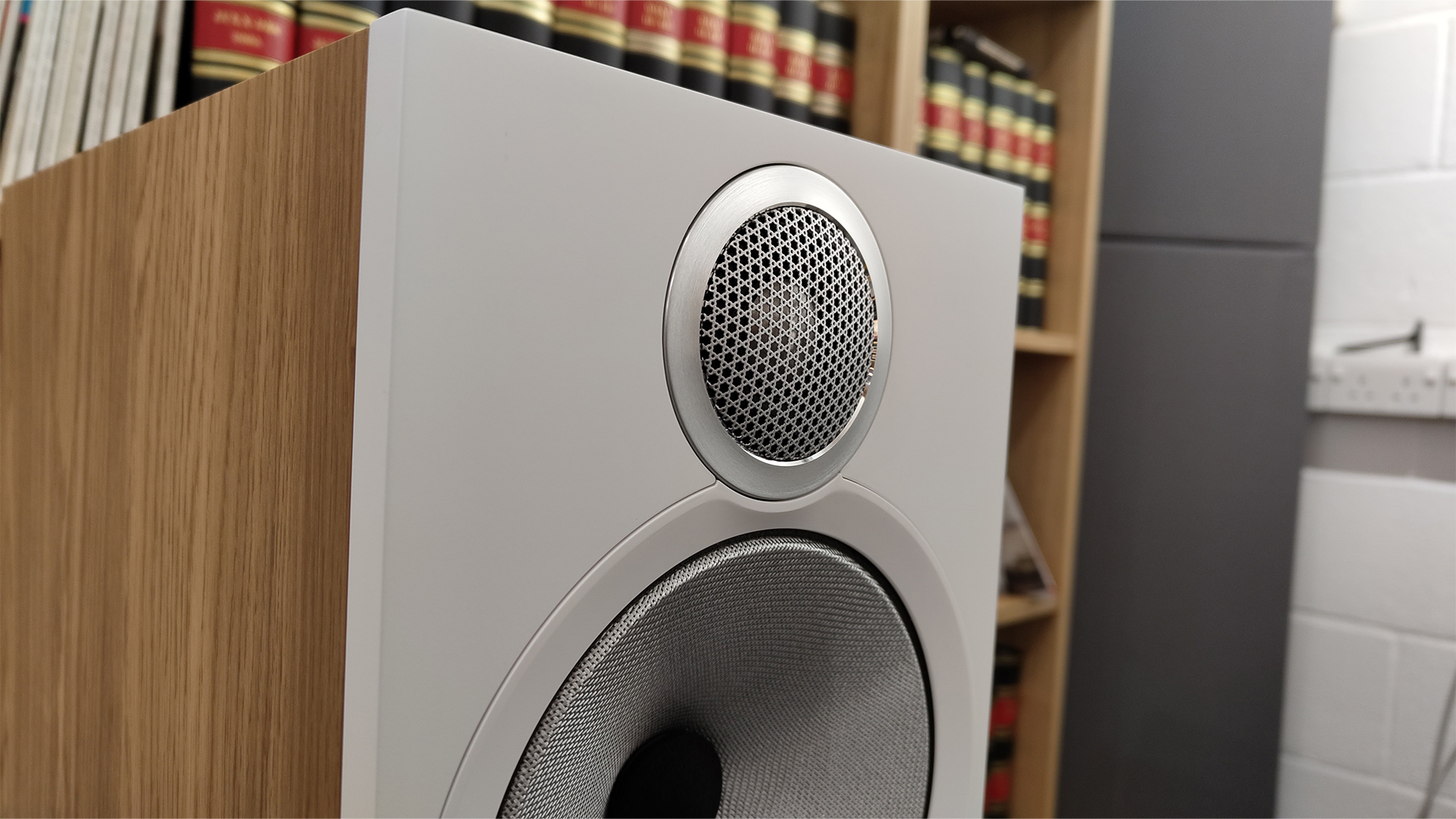
The 603 S3 are fascinating for several reasons, and that fascination only grows after spending a good deal of time listening to them. They’re saddled with a fine name and a proud legacy, have quite a few serious rivals at this level and, most importantly, serve up a rather distinct sonic character.
Let’s start this story at the beginning. You join us in our testing rooms as we fire up a recording of Björk’s Bachelorette and enjoy the weight, breadth and scale the 603 S3 bring to our favourite Icelandic songstress’s sumptuous, lush recording. There’s fullness and weight to the rendition, with lots of drive and power that will please anyone looking for their music to enjoy a whole load of weight and muscle.
There’s also real clarity and detail out on display, especially across an impressively exact midrange. Björk can be a seriously tough nut to crack, and many speakers and systems aren’t able to bring out the intricacies of her lavish, layered productions, but the Bowers have absolutely no issue in revealing those details and nuances that truly make a track sing. Violin tones come through as vibrant and textured, while the whispers and idiosyncrasies of Björk’s unique vocals are communicated to the listener with clarity and insight.
The 603 S3’s sturdy, muscular aspect gives the speakers real authority and scale, and although our dedicated test rooms aren’t exactly rivals for the Albert Hall, we can imagine that the Bowers would perform ably in a larger setting thanks to their powerful, potent sonic presentation. Play Mombasa from the Inception soundtrack and you’ll receive an engaging, forceful performance that benefits from the speakers’ taut, focused yet undeniably robust bass.
That lower end is one of the speakers’ trump cards, delivering plenty of pace and snappiness alongside real weight and force, driving the aforementioned track along with the sort of kinetic energy that gives you that sense of propulsion found in the on-screen chase sequence it accompanies. The new floorstanders are great not only at adding true lower-end robustness, but they’re also adept at bringing clarity and focus to each layer of a track’s sonic presentation. Mombasa can tend to sound overly messy and chaotic (and not in a good way) through less competent products, a trap that the 603 S3 avoid thanks to their talent for organisation, cohesion and control.
That knack for control and authority is admirable in the above contexts, but a little less attractive in others. Ploughing through many of our favourite test tracks (and quite a few wild cards), we’re somewhat struck, and a little disconcerted, by the sense that something is missing. The 603 S3 are lacking in a certain je ne sais quoi, and it takes a good deal of listening and comparison with some high-class rivals to figure out exactly what it is.
Soon, though, the picture becomes clearer, especially when the 603 S3 go head-to-head with the PMC Prodigy 5 (tested at £1995 / $2510 / AU$3399), our Award-winning rivals that just slightly expose the Bowers towers’ slight inability to cut loose and really have fun. The 603 S3 feel slightly restrained and dynamically flat, with a propensity to colour tracks with a refined yet slightly fettered sonic temperament. Whether you’re listening to an old, swinging recording of Nina Simone’s My Baby Just Cares For Me or alt-J’s bold, textured Dissolve Me, there’s just a lack of dynamic verve and contrast that doesn’t allow for instruments and voices to truly express themselves to the fullest.
Delibes’ Flower Duet is a revealing example of this. Listening to the recording unquestionably provides us with a feeling of power and assertiveness from the opening vocal performance, yet there’s a subtle lack of conviction and energy to the delivery that we can only conclude comes from the Bowers’ slightly restrained nature. The spaces around the voice aren’t always convincingly displayed or communicated, and the singer appears to be giving us a rendition that feels a little like a rehearsal rather than the key performance on opening night.
Verdict
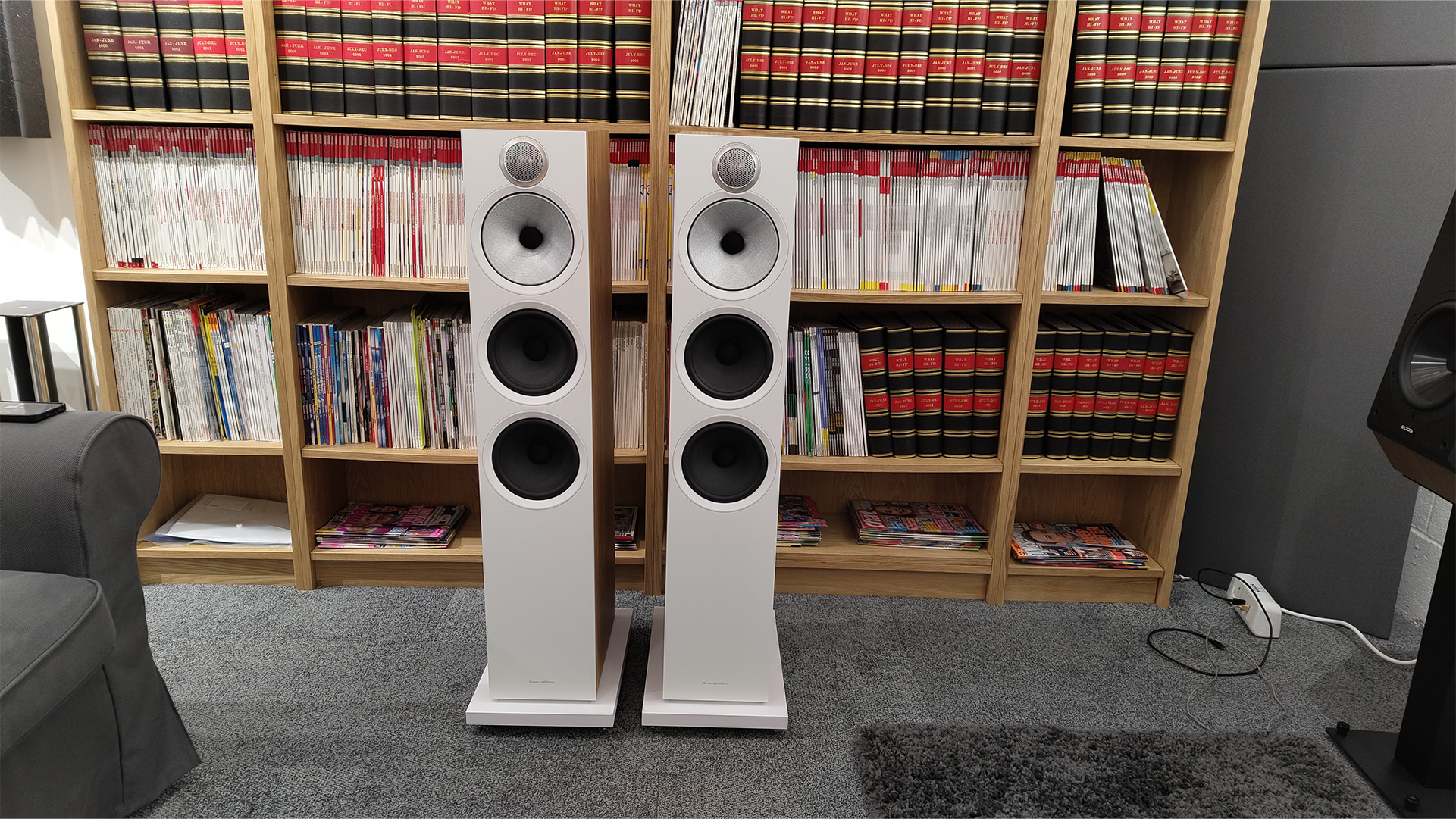
With this in mind, the Bowers & Wilkins 603 S3 may be a pair of floorstanders that appeal to the casual market more than to genuine audiophiles looking for exceptional sound at this level. For very similar money, the PMC Prodigy 5 will offer more nuance, excitement and dynamic interest than the B&W towers, but if you prioritise a robust, full sound that can go to levels their PMC rivals can’t reach, the 603 S3 still make a fair degree of sense.
SCORES
- Sound 4
- Build 5
- Compatibility 4
MORE:
Read our review of the PMC Prodigy 5
Also consider the Spendor A7
Read our ProAc Response DT8 review
What Hi-Fi?, founded in 1976, is the world's leading independent guide to buying and owning hi-fi and home entertainment products. Our comprehensive tests help you buy the very best for your money, with our advice sections giving you step-by-step information on how to get even more from your music and movies. Everything is tested by our dedicated team of in-house reviewers in our custom-built test rooms in London, Reading and Bath. Our coveted five-star rating and Awards are recognised all over the world as the ultimate seal of approval, so you can buy with absolute confidence.
